The cat guardians of Singapore
- Published
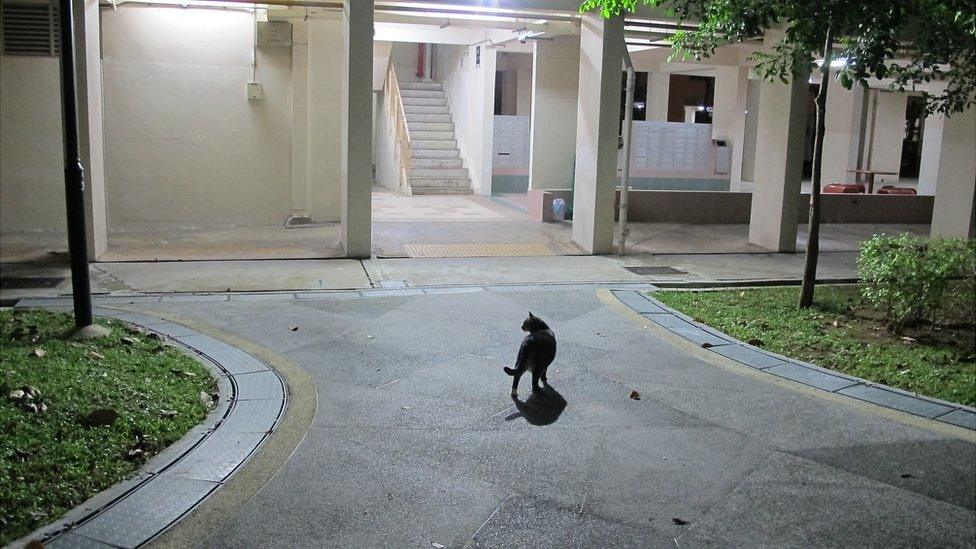
There are an estimated 600 "community cats" roaming the housing estates of Yishun
Every city has its strays, but here in Singapore, they are little different. Not scrawny and vaguely whiffy, but glossy and groomed and known affectionately as "community cats".
By day, they are fed and watered by a small army of dedicated volunteer feeders - office workers heading home, hipsters heading out, ageing "aunties and uncles".
But at night, a hardcore of cat-lovers take to the streets.

Dedicated carefully maintained feeding spots can be found all over Singapore
"This cat is very special," says a slight man in a loose T-shirt and flip-flops, crouching down by a tower block in northern Yishun district.
"She will let me know she is here, but whenever I go to her she will run away. Then when I appear to be going away, she will chase me."
True to form the cat - called Orange because she is - runs after us as we walk away into the night.
A serial killer?
"We just carry our handphones and we walk," says one woman, out patrolling.
"If maybe we can keep one cat safe every night that's enough."
Their anxiety for the cats is very real, and fuelled by a spate of mysterious deaths of community cats in Yishun earlier this year.
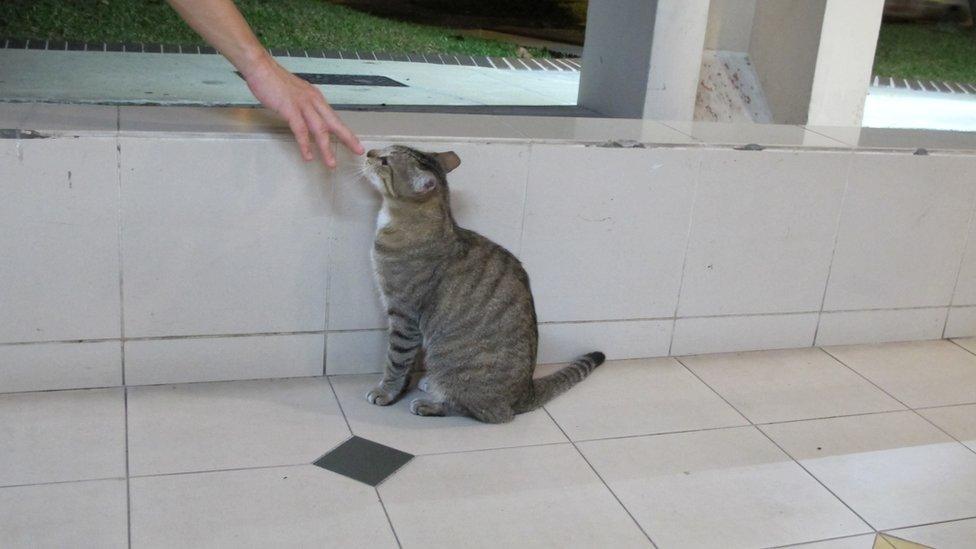
Their ease around humans makes the cats an easy target for potential assailants
For weeks, Singaporean media was full of stories documenting the latest gruesome discovery.
Animals were found with broken limbs, drowned in ponds, with severe internal injuries and in one case, with an eye gouged out. In some cases, there was no doubting a deliberate act of violence.
In total, 39 cats were reported dead within a few months.
Fingerprinting a cat?
The man in flip-flops - who didn't want to be named - stands and pauses a moment at the entrance way between two tower blocks.
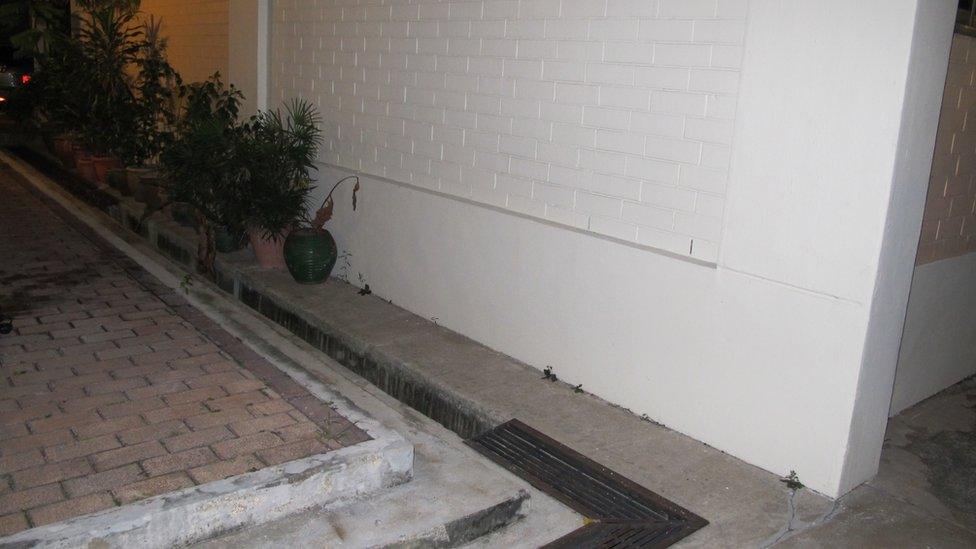
Volunteers say the neat placement of the cat in the drain, far from a road, is a clear sign her death was not natural
"This is the exact location where they found the carcass," he says.
He pulls up a picture on his phone of the small pale cat, lying neatly in the deep storm gully, a trail of blood draining away.
It's obvious, he says, that this cat was deliberately killed.
The Agri-Food & Veterinary Authority (AVA), which is responsible for investigating animal abuse cases, has only ever confirmed two of the Yishun deaths as deliberate killings.
Thirteen were falls or traffic accidents, it said, while the other cases remain unsolved.
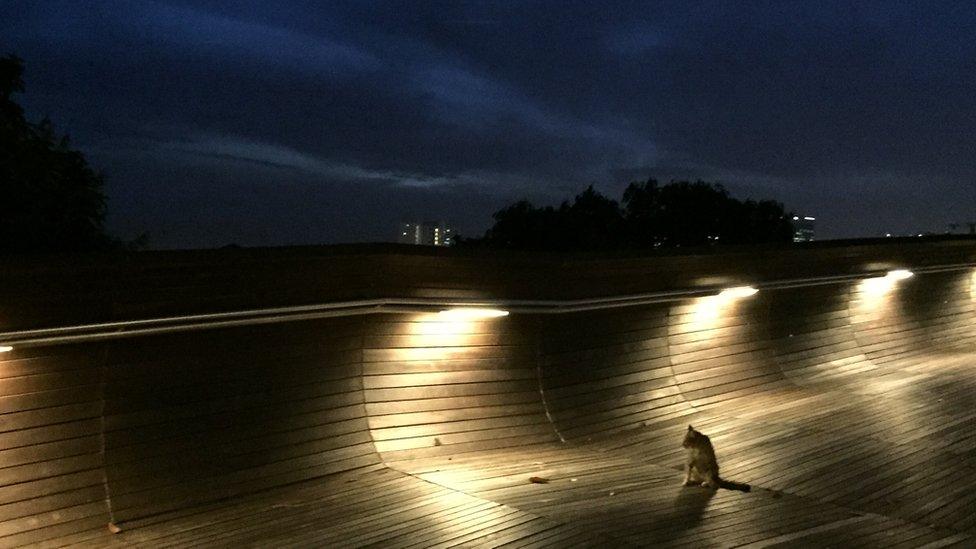
It's almost impossible not to spot a community cat while out at night in Singapore
As corpses kept turning up, there were mutterings from activists that the AVA wasn't doing enough to investigate.
One activist told me that in a country with as many CCTV cameras as Singapore, it should be easy to find the culprit.
Louis Ng, an animal-lover and an MP for Yishun, told the BBC earlier this year that the problem was a lack of evidence.
"You can't fingerprint a cat. You don't know the next of kin of the cat, and there's a limited number of people you can interview."
Mr Ng, who helped set up a rapid-response team to investigate cat deaths, praised the "amazing community spirit" of the volunteers, calling it the one positive thing to come out of the case.
Two apparently unconnected suspects were arrested over the Yishun deaths.
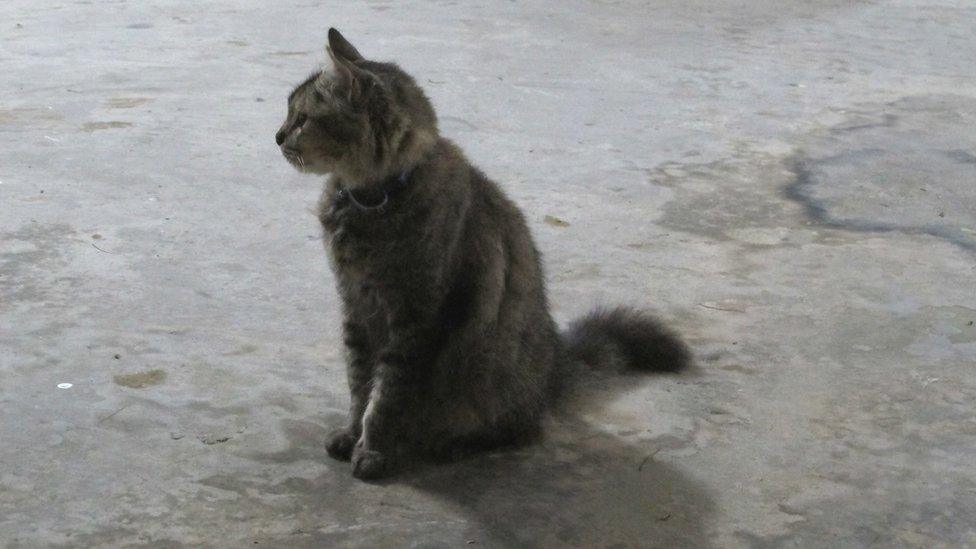
Bushy's colour and shiny coat indicate she may at one time have been a family pet
One was charged and then only this week, another was sentenced, external to 18 months probation after admitting throwing a cat off the 13th storey of a tower block.
It seems the Yishun deaths have come to an end - though only this week in a separate eastern district, a man was arrested, external on suspicion of another cat killing.
The AVA praised "civic-mindedness" for his quick identification.
'A passion for cats'
The man in flip-flops tells me he can't fully explain to family and friends why he patrols every night, on top of a full-time job.
"Not everyone can understand," he says. "It's just out of passion for the cats."
As he wanders through the night, he on the lookout for cats he knows - if any are missing, he raises the alarm with the cat guardian network.
Among the cats we meet on patrol is Bushy, named for her magnificent tail, her collar and bell suggesting she was at least at some point a family cat.

Healthy and relaxed, Cowli's trust of people is a concern for the volunteers
The aptly named Fatty also briefly passes by before waddling into the night, while Botty's Father surveys the scene from a hillock. Botty himself isn't around tonight.
A black and white cat, Cowli, bounds over without hesitation and lies down near our feet.
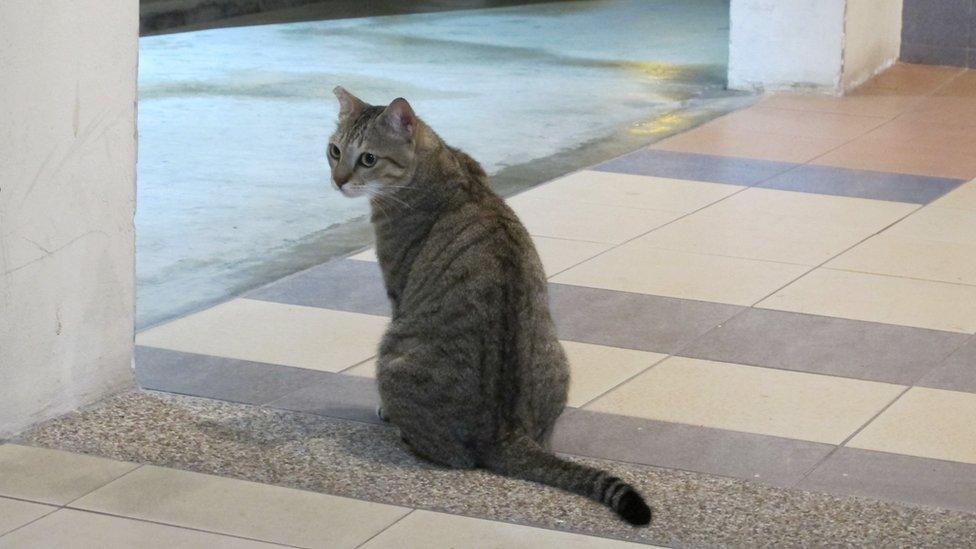
The volunteers hope Little Mulan's slight reservation around humans will help protect her from a potential attacker
As 4am approaches, he is disappointed when Little Mulan, a sleek grey tabby who is one of his favourites, keeps her distance.
But he is also hopeful, thinking perhaps her wariness of humans will keep her safe.
"The saddest thought," he says as he reluctantly walks away, "is if we will ever see her again alive".